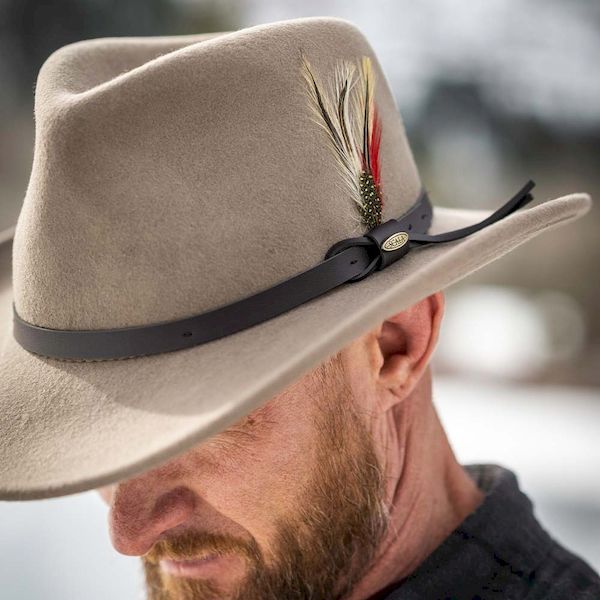Drawing a top hat can be a fun activity for artists of all skill levels. Whether you are interested in mastering this classic symbol of elegance or simply looking for a new project to enjoy, this article guides you through the process from the ground up. In this detailed guide on how to draw a top hat, we will explore the history of top hats, the required materials, and a step-by-step tutorial to help you create your own masterpiece. Let’s embark on this artistic journey!

Section 1: A Brief History of the Top Hat
Before diving into the techniques of how to draw a top hat, it’s crucial to understand its historical significance and cultural relevance.
Origins and Evolution
The top hat, also known as a “stovepipe hat,” became fashionable in the late 18th century in Europe. Originally associated with the upper classes, it served as a staple of formal attire for gentlemen, symbolizing social status and refinement.
Iconic Status
The top hat has appeared in various forms of media, from movies to cartoons. It is often associated with characters like magicians, aristocrats, and even politicians. The hat’s sleek shape and luxurious appearance lend it an air of authority and charm that continues to captivate audiences today.
Modern Interpretations
While the top hat may be less common in day-to-day attire today, it persists in formal events, theatrical productions, and costume parties. It’s not just a relic of the past; it’s a versatile accessory that can be adapted to various styles.
Section 2: Materials You Will Need
To successfully learn how to draw a top hat, gather the following materials. Having the right tools will enhance your drawing experience and allow for greater creativity.
Basic Drawing Tools
- Pencil: A standard graphite pencil for sketching.
- Eraser: For corrections and refining your sketch.
- Fine-liner or Ink Pen: To outline your drawing with bold lines.
- Colored Pencils or Watercolors: To add color and depth to your final piece.
- Drawing Paper: A smooth surface to allow for clean lines and shading.
Optional Tools for Advanced Techniques
- Blending Stump: For blending pencil shading.
- Markers: For vibrant colors and smoother application.
- Ruler: To create precise measurements if desired.
- Reference Images: Photos of various top hats for inspiration and guidance.
Section 3: Basic Shapes and Proportions
Understanding the basic shapes and proportions will make learning how to draw a top hat easier. Here are the foundational steps to consider before detailing the hat.
Step 1: Sketch the Base
Start by drawing a rectangle representing the base of the top hat. This will be the brim, and it’s essential to ensure it’s wider than the crown of the hat for a balanced look.
Step 2: Draw the Crown
From the center of the rectangle, draw two vertical lines extending upwards. Connect the top ends of these lines with a curved line to form the crown of the top hat. The height and width of the crown can be adjusted based on your preferences.
Step 3: Proportion Check
Make sure the dimensions you’ve created for the brim and crown are proportionate. A traditional top hat typically has a tall, narrow crown and a wide, flat brim.
Section 4: Adding Detail and Features
Now that the basic outline is set, it’s time to add detail to make your top hat stand out.
Textures and Patterns
- Detailing the Brim: Add a slight curve to the edges of the brim. This gives it a more realistic look.
- Crown Textures: Incorporate any patterns you wish, such as stripes or satin-like textures. Use short lines and shading techniques to emulate fabric folds.
Accessories
Consider adding accessories such as a ribbon around the crown. A simple band can be drawn with a slightly curved line. You can also include details like a bow or embellishments, which can be drawn using simple shapes.
Shading Techniques
- Direction of Light: Decide where your light source is coming from. Shade the side opposite to the light source for a 3D effect.
- Blend and Smudge: Use a blending stump or your finger for smoother shading. This adds depth and makes the top hat appear more lifelike.
Section 5: Coloring Your Top Hat
Now, let’s bring your drawing to life with color. Depending on your medium (colored pencils, markers, or watercolors), the approach may differ slightly.
Choosing Color Schemes
Popular colors for top hats include classic black, dark grey, and deep blue. For a more whimsical design, consider using brighter colors or patterns.
Applying Color
- Base Color: Start by coloring the entire hat with the base color of your choice.
- Shading: Use a darker shade of the same color to add depth, especially in shadows and folds.
- Highlights: Leave areas uncolored or lightly shaded for highlights to suggest light reflecting off the fabric.
Section 6: Final Touches and Presentation
The finishing touches are critical for creating a polished piece.
Final Review
- Inspect Your Work: Look for any areas that might need more detail or correction.
- Outline: Consider outlining the hat using a fine-liner or ink pen to make it pop.
Presenting Your Art
If you are proud of your drawing, consider framing it or sharing it on social media. You might also keep it as part of a portfolio to display your progress.
Engaging with the Artistic Process
While drawing a top hat might start as a simple task, engaging with the artistic process allows for deeper connections with your work. Embrace the journey, make mistakes, and celebrate progress.
Exploring Top Hat Applications
Beyond merely learning how to draw a top hat, consider its applications and creative potential:
Fashion Illustration
If you have an interest in fashion, practicing how to draw a top hat can enhance your skills in fashion illustration. Learn to create complete outfits featuring your top hats, considering how they interact with clothing and accessories.
Character Design
Top hats can be a fantastic accessory for characters in your illustrations or comics. Experiment with a variety of characters, from whimsical magicians to sophisticated gentlemen. This adds an extra layer of engagement and can elevate your storytelling through visual art.
Themed Artwork
Consider incorporating top hats into themed artwork. This could include spooky illustrations for Halloween, elegant pieces for formal occasions, or even whimsical settings in children’s illustrations.
Section 7: Using Different Styles and Perspectives
One way to spice up your top hat drawing is by exploring various styles and perspectives.
Experimenting with Styles
- Realistic Style: Focus on intricate detailing, textures, and realistic colors to create a lifelike representation of a top hat. Pay attention to fabric types and light angles for a more convincing representation.
- Cartoon Style: Go whimsical! A cartoon-style top hat could include exaggerated features, bold colors, and playful proportions. Use curves and rounded edges to give a cheerful feel to your drawing.
- Abstract Style: This version allows for complete creative freedom. You can play with geometric shapes, unusual colors, and patterns. For instance, you might create a top hat out of swirling colors or fragmented shapes to give it an abstract twist.
Changing Perspectives
Understanding how to portray your top hat from different angles can deepen your artistic skills. Consider:
- Front View: Straightforward and easy to capture, showing the classic shape of the hat.
- Side View: Allows for a cleaner depiction of the brim and the curvature of the crown. This perspective is effective for showcasing the hat’s profile.
- 3D Perspective: Add depth by incorporating shadows and highlights that indicate a three-dimensional form. This requires more advanced shading techniques, but the results can be rewarding.
Section 8: Composing a Scene with the Top Hat
To enrich your drawing experience, consider integrating the top hat into a larger scene or theme. This provides context and makes your art more engaging.
Contextual Elements
- Characters: Introduce characters wearing the hat, such as a magician pulling a rabbit out or a gentleman standing in a park. Characters can bring life to your drawing and make it more dynamic.
- Settings: Think about where your top hat might be found. Is it on a stylish table in a ballroom? Or perhaps it’s nestled among other vintage items in an attic? Incorporating background elements will add detail and make your drawing more visually interesting.
- Emotional Theme: Consider the emotions you wish to convey. A jovial scene might include balloons and confetti, while a more somber drawing could feature a lonely figure in sophisticated attire, adding depth to your subject.
Conclusion
By familiarizing yourself with the history, practicing with various techniques, and engaging with the artistic community, you will further solidify your skills and creativity in how to draw a top hat. Each drawing session will contribute to your growth as an artist, allowing you to create works that are uniquely your own.




